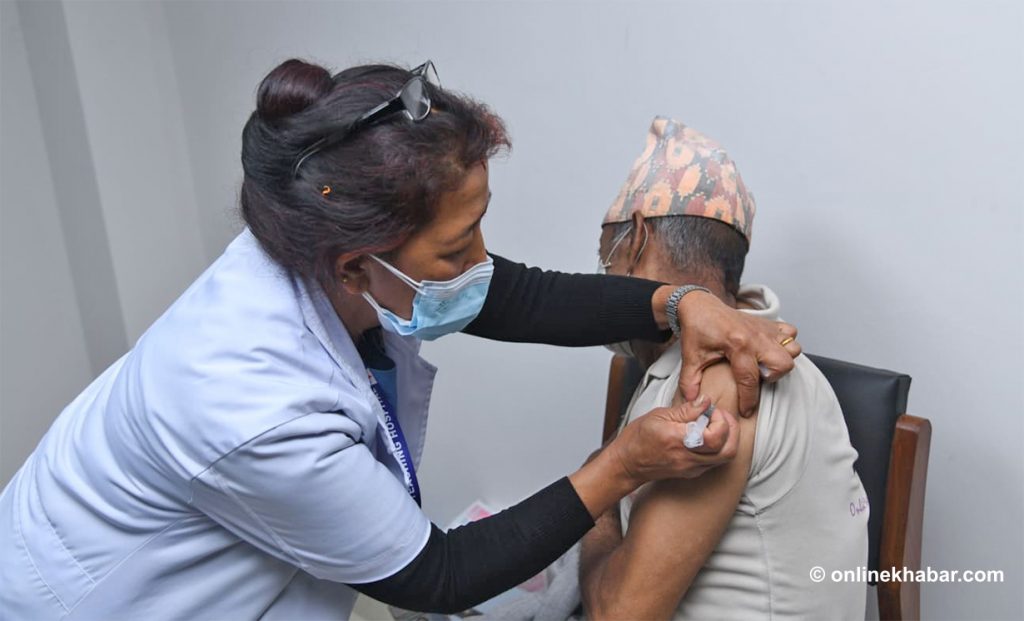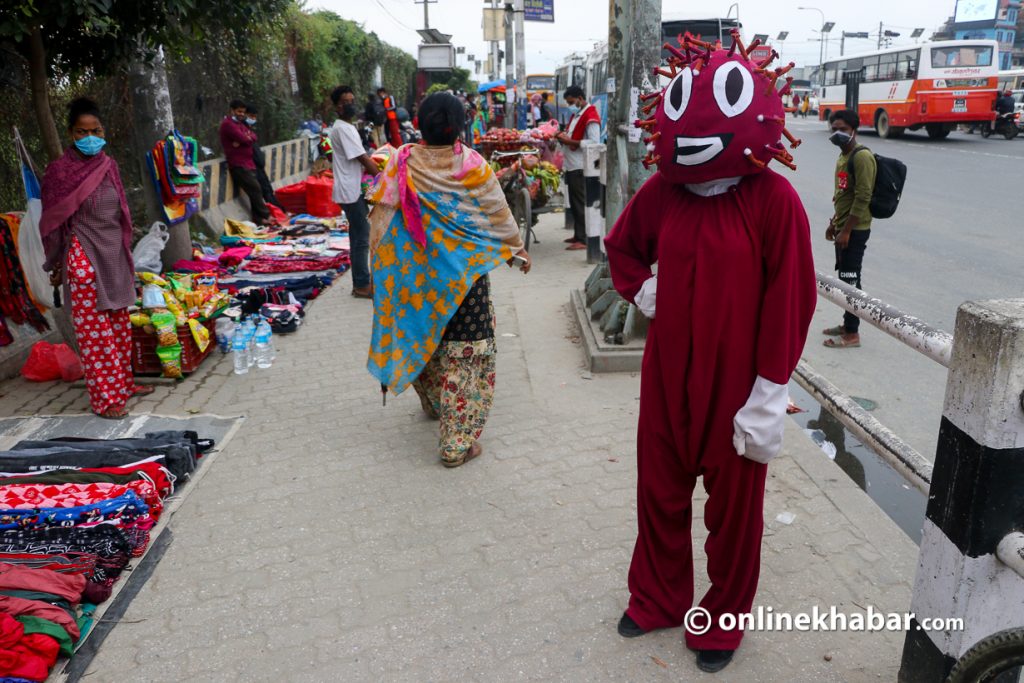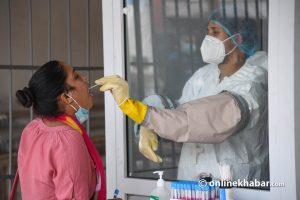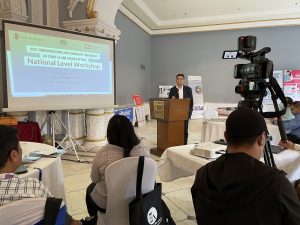The spread of coronavirus infection has resurfaced in Nepal. The infection was confirmed in 113 people on Wednesday, and it was the highest in the past four months, sparking fears of the fourth wave of the Covid crisis in the country.
According to the Ministry of Health and Population, 112 people were infected previously on March 10, 2021. Since then, the number of infected people had been steadily declining, until now.
A new subvariant of the Omicron variant of the coronavirus, which has been considered more contagious till now, has been named Omicron BA.5. As it has been recently detected in Nepal also, apparently, the subvariant BA.5 has been responsible for doubling the daily infection rate in recent weeks.
Currently, the number of infected people found at the entry points of Nepal and India has been increasing. The director of the Epidemiology and Disease Control Division, Dr Chuman Lal Das explains, “Covid cases seem to be on the rise in Nepal as well. The number of infected people is increasing at the Nepal-India entry points. The subvariant BA.5 of Omicron is increasing the infection. This is an early sign that the fourth wave might be prevalent soon.”
He adds the increasing number of infected people in India indicates that it will spread easily in Nepal as well.
The new subvariant and uncertainties

According to public health experts, Omicron’s new subvariant BA.5 is the most contagious variant as of now, which has the ability to transmit infections at a high speed and cause the fourth wave.
Virologist Dr Sher Bahadur Pun of the Shukraraj Tropical and Infectious Disease Hospital, Kathmandu says, “There are high chances that even vaccinated people could get infected, resulting in another fourth wave of the infection. Though it transmits at a high speed, according to the research done in different countries, the number of people infected from it being admitted to hospitals is low.”
According to the statistics of different countries, patients’ hospitalisation and death rates due to the subvariant BA.5 are less than those with the previous variants. “But, due to Omicron’s converted genes’ spike protein, there are chances that its infection might spread in a short time,” says Dr Prabhat Adhikari, infectious disease and critical care consultant.
Another infectious disease specialist Dr Anup Subedee adds, “There has not been any study on how dangerous this variant might be. The new variant has been declared a variant of concern by the World Health Organization.”
The Omicron subvariant BA.5 exhibits different symptoms from other variants, according to numerous research works. Additionally, infected individuals experience increased head and neck pain, impaired thinking, depression, and difficulties walking in the light.
Hopes and fears

Studies so far have found that Omicron has a 13 R-naught (R0) value whereas its subvariant BA.5 has an 18 R0 value. According to the experts, the R0 value means the ability to transmit infections to as many people as numbered. It, hence, means that the new subvariant can infect the disease among more people, more quickly. So, is it the fourth wave?
“Measles was the most contagious virus till now. However, the new subvariant of Omicron, BA.5, is seen as the most contagious now. This may indicate the rise of the airborne infection wave,” explains Dr Subedee.
According to the latest figures from the UK, hospital admissions have risen by 30 per cent. Dr Subedee adds, “Many people died when the Delta variant spread in Nepal. However, Omicron was not more lethal. It’s been a year since the third wave. That’s why we’re more at risk (of the fourth wave) than during the time of Omicron.”
Likewise, public health expert Kedar Baral says, “Changes have been found in Omicron’s spike protein. And, it’s been a long time since we’ve taken the second dose of the vaccine. Due to this factor, the immune system of Nepalis is declining and new subvariants are rising. This indicates the chances of the fourth wave.”
Hence, Dr Samir Adhikari, the assistant spokesperson for the Ministry of Health, argues that with the change, individuals should be more alert to upholding public health norms so as to save themselves during the possible fourth wave.
Concerns have been expressed that as the Omicron infection develops, it will become more challenging. In light of this, the Health Ministry is acting to improve monitoring, give immunisations top priority, and oversee hospitals, according to Dr Adhikari.
This story was translated from the original Nepali version and edited for clarity and length.
























